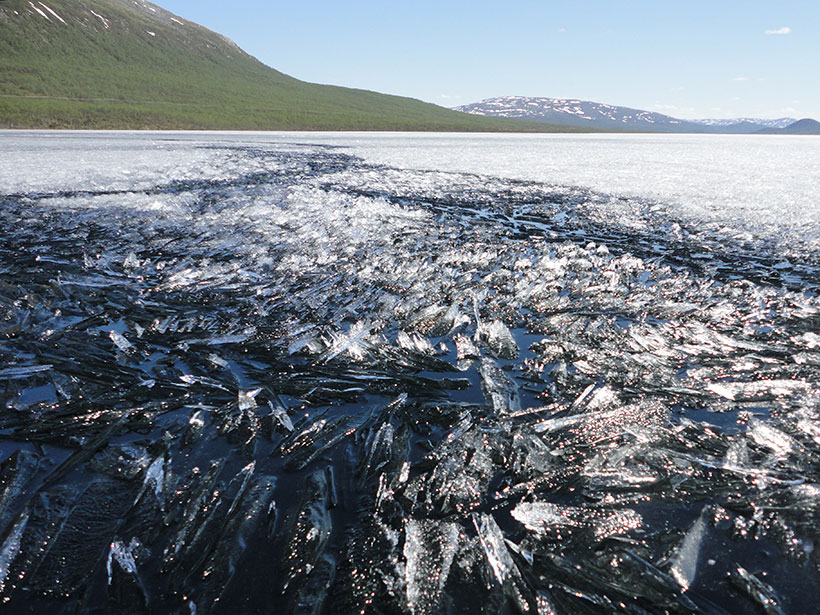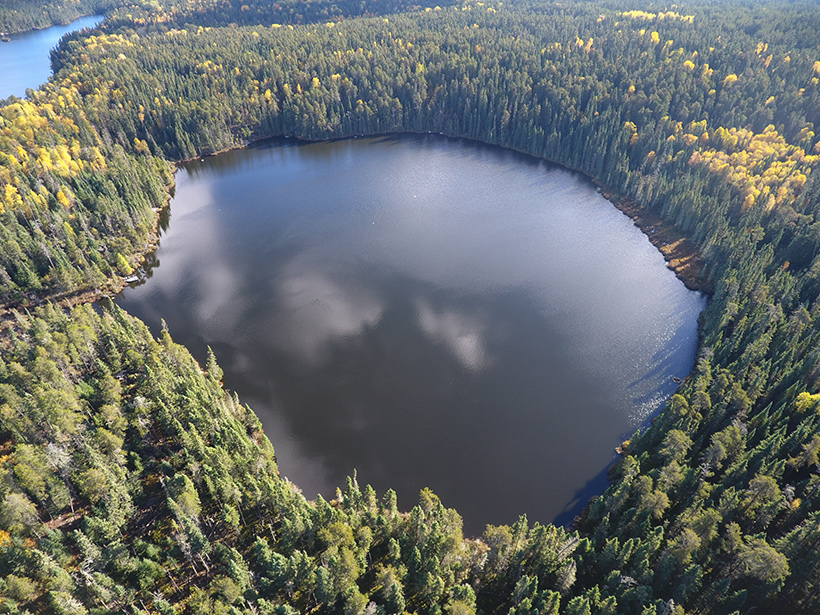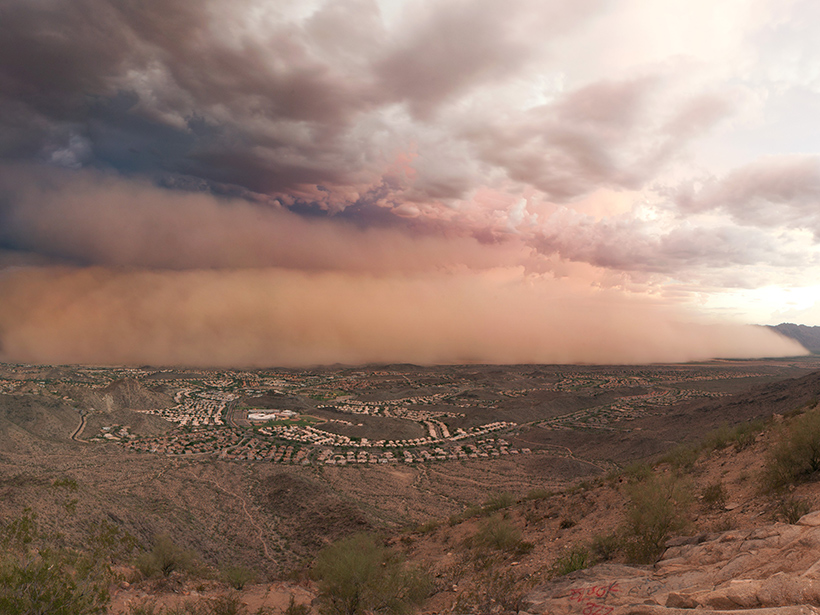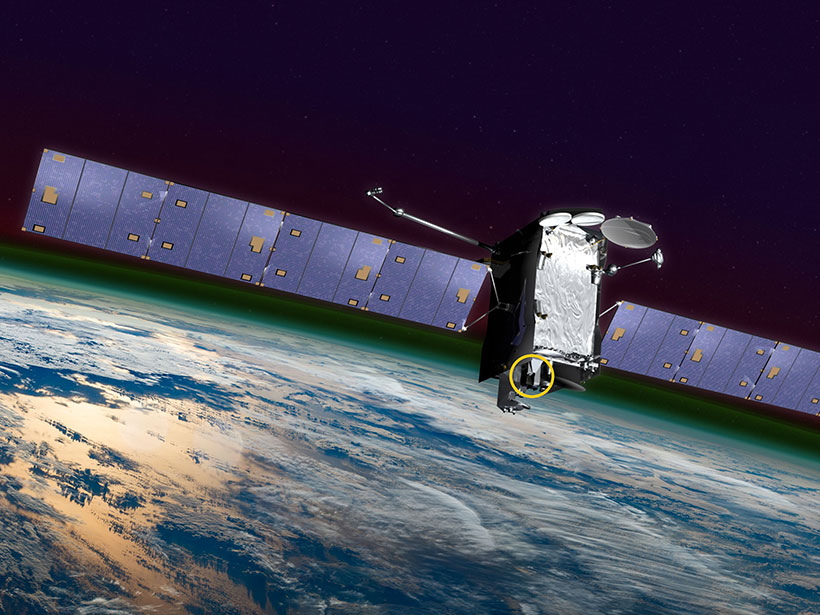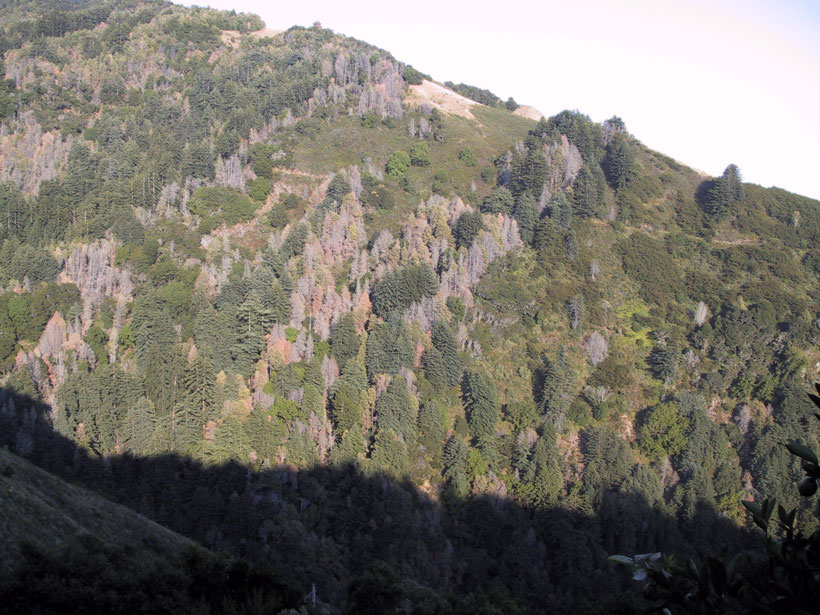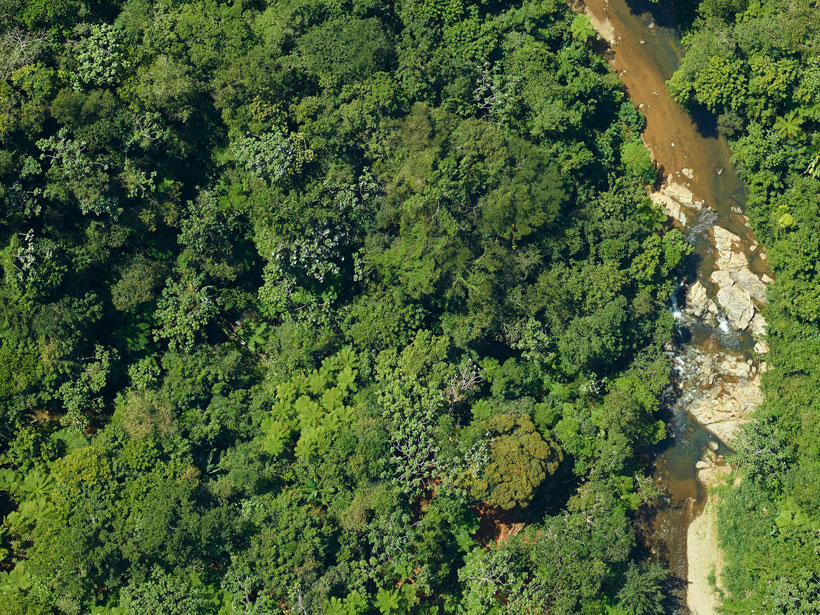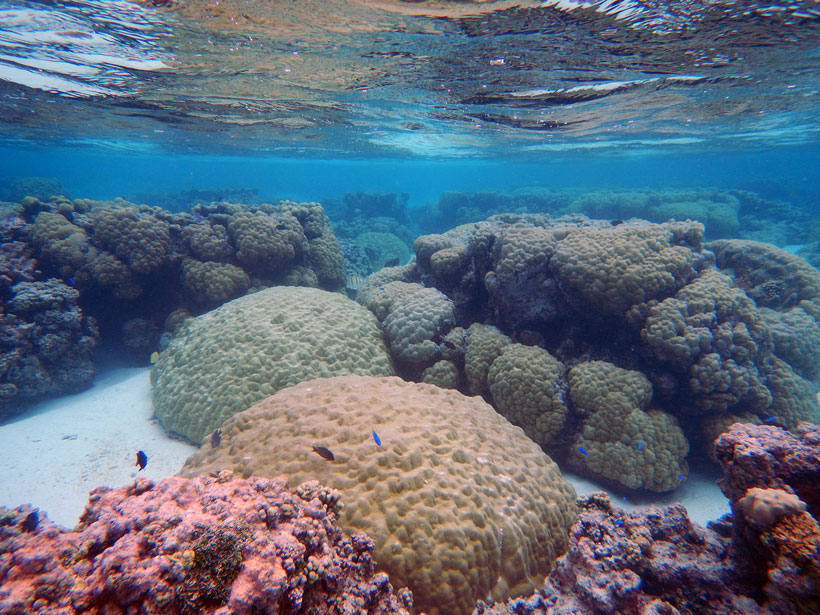Extending ice records and standardizing sampling protocols are among recommendations to help researchers better predict how changing ice cover will affect aquatic ecosystems.
Research Spotlights
Research spotlights are plain-language summaries of recent articles published in AGU’s suite of 24 journals.
The Lasting Legacy of Phosphorus Buried in Lakes
Research at an experimental lake suggests that phosphorus inputs from runoff may affect the health of aquatic ecosystems long after external additions of the nutrient are reduced.
Dust Storms Associated with Increase in Critical Care Visits
Fine particulate matter from dust storms can exacerbate respiratory diseases, and now scientists have shown that critical care hospital visits spike during and after such events.
“Mushballs” May Drive Ammonia Transport on Jupiter
Hail might account for observed depletions of ammonia in the planet’s atmosphere.
A GOLDen Way to Study Space Weather
A NASA mission is observing airglow in the upper atmosphere and uncovering what it tells us about Earth’s space weather system.
Megaripple Migration Offers Insights into Martian Atmosphere
The movement of large sand ripples, documented for the first time, suggests Mars is windier than we thought.
Sudden Oak Death Taking a Toll on U.S. West Coast
Researchers have been modeling effects of the plant pathogen Phytophthora ramorum on coastal forests in California and Oregon since it arrived on the West Coast 3 decades ago.
In Vegetation Growth Studies, What You Measure Matters
Different satellite-based metrics for global vegetation coverage tell complementary, but not identical, stories.
Corals Make Reliable Recorders of El Niño Fluctuations
A new tool that reconciles modeling and paleoclimate data builds confidence that tropical Pacific corals reliably archive natural variability in the El Niño–Southern Oscillation climate pattern.
Altitude Matters for Solar Eclipse Observations
The path of a solar eclipse through Earth’s ionosphere, which can be quite different than it is at ground level, appears to explain patterns of ionized particle depletions.

